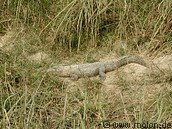The Himalayas(Mountains in Nepal)
The Himalayas or "abode of snow" is in fact the youngest and highest mountain system in the world. It extends over 2,400kms as a vast south-facing area between the Indus and Brahmaputra rivers with Nanga Parbat (8,125m) and Namcha Barwa (7,755m) as its terminal high points. Fully a third of 800kms of its central section traverses Nepal and is known as the Nepal Himalayas, Here congregate more than 250 peaks that exceed 6,000m in height-a unique concentration of lofty dazzling summits. Of the thirty one Himalayan peaks over 7,600m, twenty-two like in Nepal Himalayas including eight of the world's fourteen highest giants. These are:
Sagarmatha(Mt. Everest) 8,848m
Kanchenjunga 8,586m
Lhotse 8,516m
Makalu 8,463m
Cho Oyu 8,201m
Dhaulagiri 8,167m
Manaslu 8,163m
Annapurna 8,091m
The Himalayan range within Nepal fits into a geographic pattern as the culmination of a series of parallel ranges. The main mountain region, represented by the eternal ranges, lies about 90kms north of the Mahabharat Lekh. The intervening space between the two parallel ranges is made up of the lower belt of the low hills (Pahar) and the higher belt of elevated ridges (Lekh) that provide the first intimation of the high snow continuous range but rather a chain of lofty ridges separated by deep gorges. Each of these mountain chains or Himals in turn sends out a maze of spurs studded with numerous peaks.
In the western and central Nepal, there is yet another mountain range that defines the boundary between Nepal and China. This border range has elevations ranging from 5,000 to 6,000m with comparatively less rugged relief but a harsh climate. Between the main Himalayan range and these border ranges lie some of the elevated Bhot Valleys.
Much of the high country above 5,000m is under the realm of snow and ice although the permanent snow line may vary according to aspect and gradient. Winter snowfall occurs up to an elevation of 2,000m and is much heavier in the western part. While winter is harsh and bitter, summer is the season of alpine flowers and is the time of the year when the high pastures teem with grazing animals from lower valleys. For the mountain communities, it is the time for harvesting their main crop before their winter migration to warmer climates
Thursday, June 4, 2009
Mountains of Nepal
Posted by Angad at 2:35 AM
Subscribe to:
Post Comments (Atom)































0 comments:
Post a Comment